The lifetime of smart bulbs is one of the most concerning points that we all care about.
In the market, there are numerous ratings offered by smart bulb manufacturers’ saying they will last more than 15 or 20 years.
But, are their states genuinely accurate? Well, I’m sorry. It isn’t that true, and you should not believe it directly.
In this article, with the data from 31 smart bulbs, I’ll explain how much time a smart bulb last. At least, you will have the proper idea of determining the smart bulb’s lifetime.
Before going for details explanations, here’s a summary.
Based on the manufacturer’s rated data gathered from 31 smart bulbs, the average lifetime for a smart bulb range between 15,000 to 20,000. This is approximately 25 times longer than a typical incandescent, five times longer than a typical CFL, and two times lower than a pure LED-only bulb.!
Calculating the lifetime of a smart bulb, depending on various parameters.
However, let’s learn why it is so hard to give an exact number as a lifetime. If you are curious, dig into the section where I explain how to keep smart bulbs properly for a longer lifetime.
How Long Do Smart Bulbs Last: Based on the data of 31 Smart Bulbs
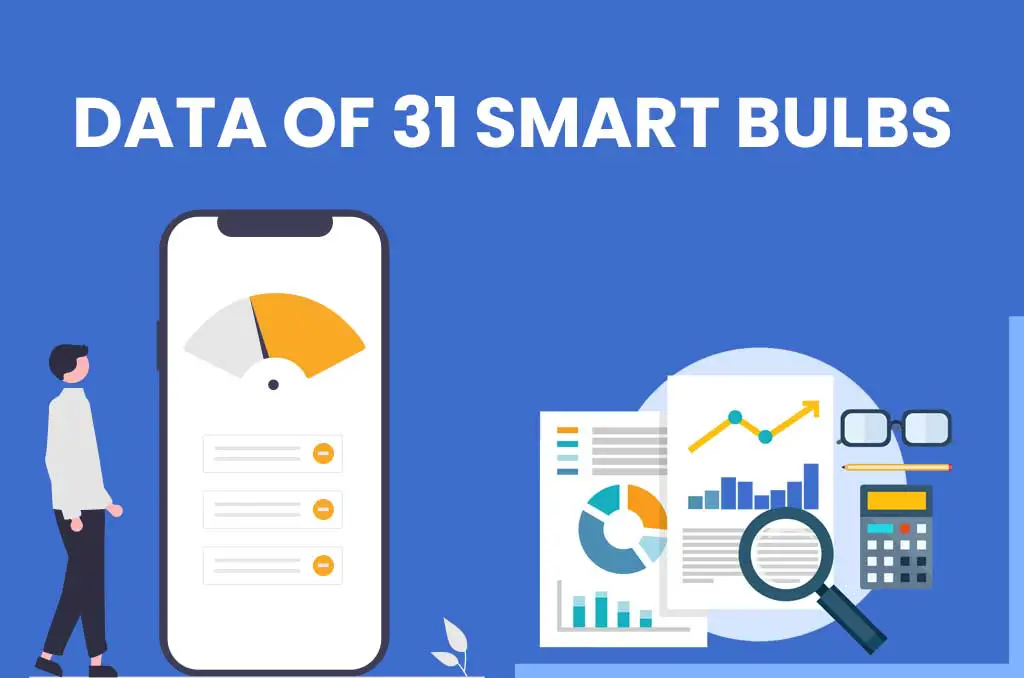
While looking through the different data provided by different smart bulb manufacture’s, I’ve seen that some of this information is misleading.
Most of the manufacturers claim more than 20 years of use.
Believing that as a fact, is wrong, and manufacturers, seem to limit the proper information that may help to understand the real life of a smart bulb.
One of the major misleading facts is the number of years that they say.
Each manufacturer seems to be using a different number of hours to calculate this. Some of them, even do not mention the number of hours they use for a single day.
For example, let’s say A company bulb is rated for 15,000 hours. They widely market their bulb by saying it will last for 6 and a half years. Then the B company which has a bulb rated 15,000 hours says their bulb will last 13 years.
Now, most of the urgent buyers will rashly purchase the bulb from B for obvious reasons.
How, is this difference between two bulbs if both have the same rated hours, 15,000?
Well, that’s because company A calculates the life span by using 6 hours per day. The second company calculates and markets its life span by using 3 hours per day.
This information is hidden in the product information or nowhere to find.
Once, I’ve seen this, I did some research work to find mostly purchased smart bulbs in the market and tried to find their rated lifespan in hours.
Based on the found information (rated hours were found from either manufacturer’s website, product datasheet, or authorized seller’s marketing web page), I’ve plotted the below table and calculated the lifespan for continued use of 6 hours per day.
| Bulb Type (Click to check the latest price) | Lifespan in Hours | Continues 6 Hours a Day |
| PHILIPS HUE A19 Smart Bulb | 15,000 | ~6 and half-years |
| LIFX Smart Bulb | 25,000 | ~11 years |
| IKEA TRÅDFRI Smart Bulb | 15,000 | ~6 and half-years |
| TP-LINK Kasa Filament Smart Bulb | 25,000 | ~11 years |
| Sengate Smart Wi-Fi Bulb | 15,000 | ~6 and half-years |
| Wyze Smart Bulb | 15,000 | ~6 and half-years |
| TP-LINK Kasa Smart Light Strip | 25,000 | ~11 years |
| Yeelight Smart Bulb | 25,000 | ~11 years |
| Nanoleaf Canvas | 25,000 | ~11 years |
| Treatlife Smart Bulb | 30,000 | ~13 and half-years |
| Ring A19 Smart Bulb | 25,000 | ~11 years |
| LUMIMAN Smart Bulb | 31,320 | ~14 years |
| OHLUX Smart Bulb | 10,000 | ~4 and half-years |
| SAUDIO Smart Bulb | 20,000 | ~9 years |
| TECKIN A19 Smart Bulb | 30,000 | ~13 and half-years |
| Geeni LUX A19 Smart Bulb | 25,000 | ~11 years |
| eufy Lumos A19 Smart Bulb | 20,000 | ~9 years |
| BERENNIS Smart Bulb | 20,000 | ~9 years |
| WIXANN Smart Bulb | 30,000 | ~13 and half-years |
| SUNCO Smart Bulb | 25,000 | ~11 years |
| LOHAS Smart Bulb | 30,000 | ~13 and half-years |
| Aoycocr Smart Bulb | 25,000 | ~11 years |
| Helloify Smart Bulb | 30,000 | ~13 and half-years |
| MagicLight Smart Bulb | 20,000 | ~9 years |
| AXTEE Smart Bulb | 20,000 | ~9 years |
| HYDONG Smart Bulb | 30,000 | ~13 and half-years |
| Boxlood Smart Bulb | 30,000 | ~13 and half-years |
| DORESshop Smart Bulb | 30,000 | ~13 and half-years |
| C by GE A19 Smart Bulb | 15,000 | ~6 and half-years |
| NOVOSTELLA Smart Bulb | 50,000 | ~22 and half-years |
| LE LampUX Smart Bulb | 15,000 | ~6 and half-years |
From the table, I’ve found that the majority of bulbs have a rating between 15,000 to 25,000 hours.
However, there are some brands that state very high lifespans like 50,000 hours.
I really doubt that kind of performance without proper scientific evidence.
Even to give an average lifespan for a smart bulb, there should be an almost perfect scientific procedure that will cost money and time (most manufacturers do not even care).
Do smart bulbs burn out?
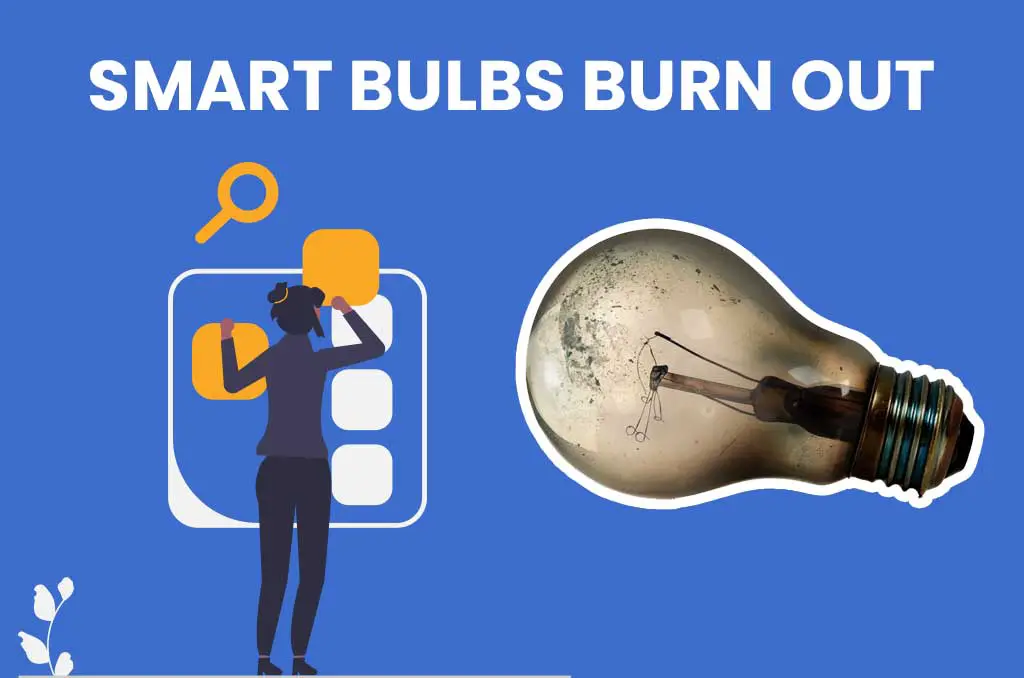
Yes, smart bulbs burn out as any other bulb would.
The difference is, it has a lifetime more than your CFL or incandescent bulb.
By the way, keep in mind that non-smart LED bulbs can last longer than smart bulbs. Even both bulbs use the same LED technology.
This is because of the additional functionalities offered by smart bulbs. To offer those smart abilities, each bulb has complex circuits inbuilt.
These controlling modules will add an additional factor to the bulb’s lifetime.
These kinds of modules are very sensitive to heat and voltage fluctuations.
Simply, it, means these circuits can burn out quite easily.
Therefore, typical LED bulbs can last longer than smart LED bulbs.
Moreover, there are several independent studies carried out to determine the LED bulb’s lifespan. These studies show that most LED brands fail to meet their rated lifespan.
The surprising fact is some of these LED bulbs are from well-known electronic manufacturers.
This kind of study is really important to understand the smart bulb’s lifetime too. Both types of bulbs use LED technology.
However, smart bulbs are more complex than typical LED bulbs; they can burn out way before a typical LED bulb.
Therefore, my conclusion is not to believe what manufacturers say. The actual lifespan could be 40% to 50% less than their product-rated lifespan.
Are smart bulbs worth it?
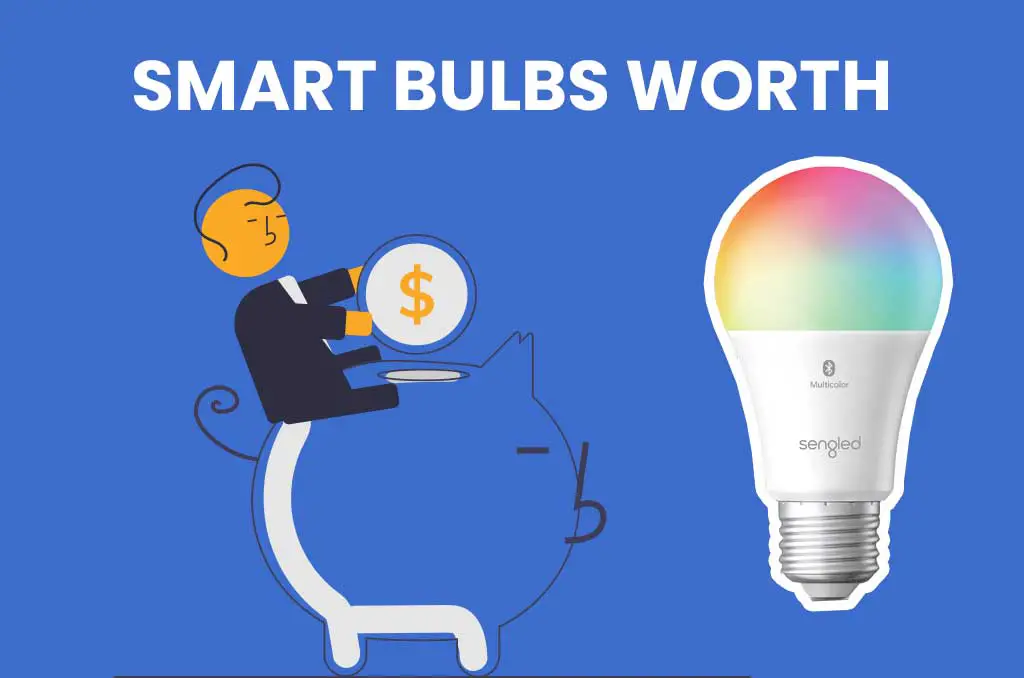
Smart bulbs are really worth having. There’s no doubt of that.
However, the purchase decision should take after carefully considering the right requirements.
If you just want a light with minimum electricity, then go for a LED bulb.
If you want a bulb that could change the color or be able to schedule automatic on/off cycles, then go for a smart bulb. You won’t regret it.
By the way, in the below table, I have calculated the price for a continuous 24 hours of operation for 31 smart bulbs.
I hope this table will provide useful insights into the price-wise perspective of different smart bulb brands.
One more thing, do not go for the lowest price bulb. That’s not the way you should select a smart bulb. There are other factors you need to consider.
At least, you need to care about these points before buying a smart bulb
- Brand – Brand is a tread between quality and price. A well-known brand does not offer bad products. If they do so, it will backfire on their brand name.
But, those big names can offer you a high price tag for the same product that can be obtained from a small brand.
So managing both points is a kind of tricky process.
- User reviews – User reviews are one of the great ways to assess a product. You can have an overall idea about the product and its initial problems with good research on user reviews.
Keep in mind that there are some buyers who give bad reviews all the time. These reviews are not honest or concrete.
So, evaluating their opinion by looking at trustworthiness.
- Lifespan – Yeah, you need to think about this one too. I’ll not be going to talk much about this here. This article is all about this point.
- Environmental Conditions – This is a point that many buyers may not consider. Some products do have operating conditions.
That means some of them may not work correctly in high heat or extreme cold weather.
So, if you are looking for a smart bulb that may go outside or near a window, then check the products working conditions.
- User-friendliness – Some smart products can be very hard to configure. Sometimes, they will work only for their native app.
If you are planning to connect your smart bulb to Alexa or google home, then you need to check whether your selected product supports those.
How safe are smart bulbs?
In terms of safe, I can’t say that smart bulbs are very safe to use. There are some risks involved with these devices.
Well, let’s categorize these risks into two parts. So, it will be easy to understand.
Security Concerns about smart bulbs
There are studies that show smart bulbs can be hacked. That’s scary. Right?
Since this smart bulb technology is still new, it does not have many security protocols.

Therefore, there are ways that can exploit these devices.
As a solution for this, the experts in the industry suggest using very strong passwords for your smart bulb-controlling apps.
Fire hazard ability in smart bulbs
Each and every bulb does have a fire hazard potential. It’s not a secret.
When bulbs are working, they tend to increase their internal heat rapidly. This is the key reason that many bulbs can catch fire.
But, smart bulbs, use LED technology. LEDs are capable of converting current into light more than conventional bulbs.
Therefore, the ability to increase heat is minimum. This means smart bulbs are safer than conventional bulbs like CFL or incandescent.
Further, hackers may use your smart lights to penetrate your network and collect personal information because your smart lights are linked to your Wi-Fi network. As a smart home editor, Sarah Kovac, explains, “smart lights” are no more or no less safe than any other smart gadget.
Do smart bulbs use more electricity?
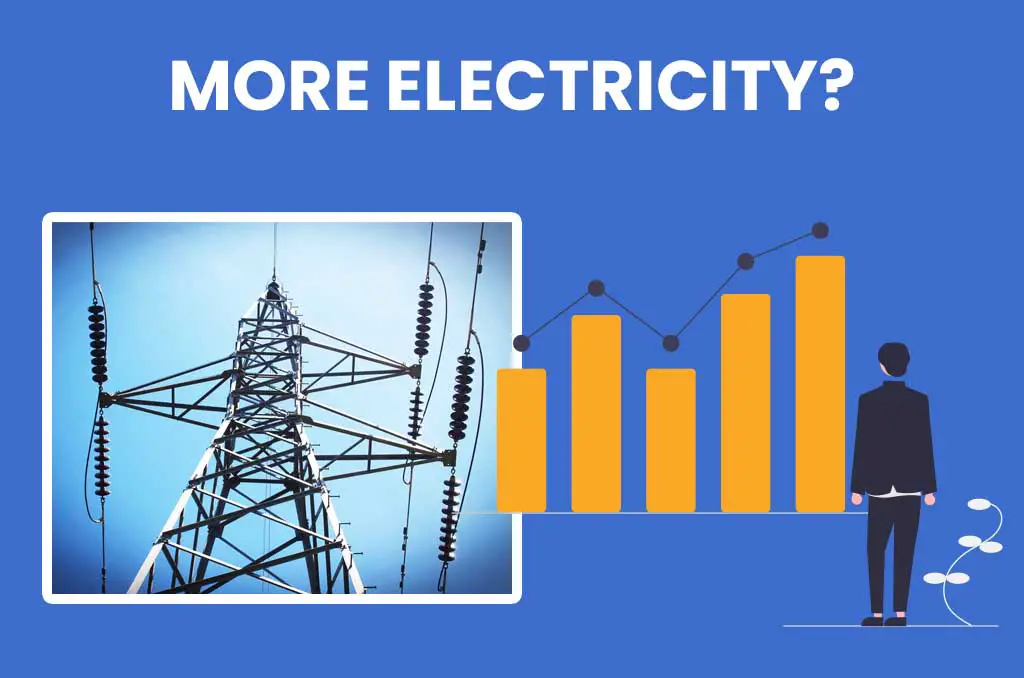
Electricity bill is another factor that is associated with the process of selecting a suitable smart bulb for your home.
Even if you have selected a longer lifespan bulb, you could end up with a highly energy-consuming smart bulb. That’s your thoughts. Right?
Well, do not worry. Actually smart bulbs are good for saving your electricity bill.
You can even schedule your bulbs to turn off automatically. This kind of feature can save lots of energy.
Moreover, as you are aware, it is using LED technology, which is one of the best energy-saving options right now.
But, I saw that some of the new users claim that smart bulbs use electricity even there are off and cause high bills.
Technically speaking, there are right about electricity use even the smart bulb is off.
But, it does not cause additional charges on the bill.
Smart bulbs do use electricity in their circuits; even the light seems off. However, what you need to know is this electricity amount is pretty much small.
The amount of electricity may cause one or two pennies for a month’s use. It’s really that small.
Do you have to replace smart bulbs?
Yes. If the light burnout, then you need to replace it.
You can’t repair it due to its relatively complex internal circuits.
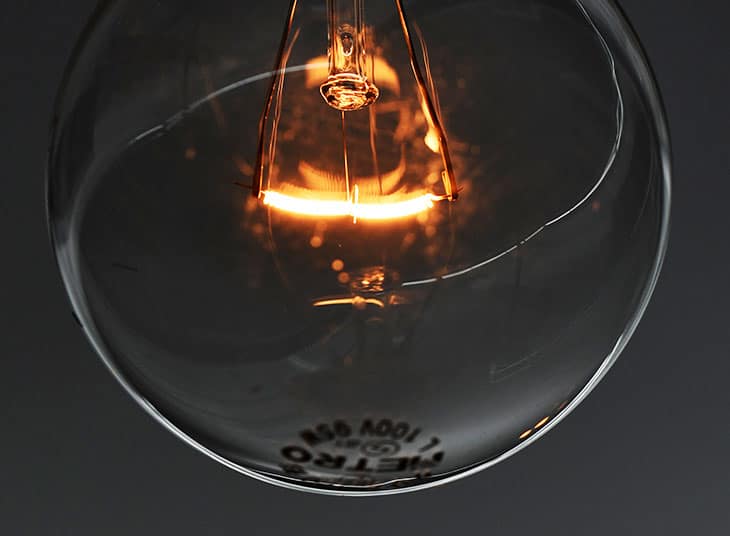
How long do color-changing light bulbs last?
There is no such difference between smart or colour-changing bulbs. Both bulbs can be considered smart bulbs.
Therefore, color-changing bulbs do last for an average of 15,000 to 20,000 hours.
How do you use smart light bulbs: for a longer lifetime?
To maximize your smart bulb’s lifetime, first, you need to understand the factors that affect its rated life period.
- Components – The bulb needs to have grade-A quality electronic parts. Some companies use grade B or C parts in order to reduce product price tags. Lower-quality electronic parts are very vulnerable to heat, humidity, and voltage fluctuations.
- Operating Environment – Smart bulbs consist of complex controlling modules. These sensitive circuits are needed to protect from dust, heat, or moisture. Otherwise, the smart bulb can burn out way before its rated lifespan.
- Build Quality – This means the overall build quality of the device. Not just the internal components. The bulb’s main circuits need to have proper safety circuits, proper enclosures, heat dissipation mechanisms, and many more. Cheap manufacturers do not care about these.
- Stable Power – If the powering electricity has a higher fluctuation rate, then it will degrade your bulb’s electronic parts and eventually burn out the bulb.
Now, I think you know why we can’t estimate an exact life period for a certain smart bulb.
As I explained in earlier points, there are lots of factors that play in the smart bulb lifespan calculation.
So, to ensure your smart bulbs achieve their maximum lifetime, you can follow the steps I have noted below.
There are not perfect. But they will add a proper environment for your bulbs to last longer.
- When selecting a smart bulb, go for a well-known brand with proper reviews. Do not blindly select your smart bulb, just watch the brand name. There are some small brands that offer the same quality at a low price. User reviews are the helping factor in this case.
- Check your bulb’s working condition and set your bulb to match those parameters where possible. Do not mount your smart bulb where it is too hot or cold.
- Avoid the place that produces much moisture when mounting your smart bulb.
- Pre-check your house voltage for any variations. If it seems there are voltage fluctuations, then call for an experienced electrician to fix that.
How Long Do Hive Bulbs Last?
Hive Bulbs have a 20,000-hour life expectancy on average. Longer-lasting models may operate for up to 25,000 hrs. How long does it take to complete 25,000 hours? For an average of 3 hours of use every day, you are smart light may endure for roughly 22 years.
“There will be fewer bulbs to replace and less waste to dispose of. Lifespan considerations include the quality of the bulb, the kind of bulb, and the daily “on time” of the bulb. For the most part, manufacturers estimate product lifespan based on daily hour consumption, so keep an eye out for such details.
How Long Do Lifx Bulbs Last?
They are rated 40,000 hours by LIFX, while TCP and Hue’s bulbs have been rated at 25,000 and 15,000 hours, respectively (27 years over 4 hours every day). Sixteen million colors may be shown by LIFX lights, much like Hue bulbs.
How Long Do Regular Light Bulbs Last?
While a standard incandescent bulb will last about 1,000 hours, CFL bulbs last 10,000 hours, and LED bulbs last 25,000 hours. Incandescent bulbs burn out after around a year, but CFLs and LEDs may last up to 25 years.
Do Smart Bulbs Use Electricity When Off?
Despite their familiarity and low cost, incandescent light bulbs are very inefficient. Even though energy-efficient LED lights cost more upfront, they save you money and power over time. Then there are smart bulbs, which will usher in a new age of household illumination. Even though they’re pricey (ranging from $30 – $40 per bulb), you may use your voice to operate these gadgets. You’ve arrived in the future.
Smart Technology, Siri or Alexa, can switch on and control these smart lamps. You can also use your voice or a smartphone app to change their color, play music, and gradually dim lights to help you fall asleep better.
However, they use a modest amount of power even though the lights are not on, thanks to this cutting-edge technology. Due to their status as “vampire appliances,” smart bulbs need a lot of power even when they are not being used, even though they don’t use much energy.
When They Are Not In Use, Do Smart Bulbs Still Use Power?
Smart bulbs fall under the category of “vampire devices,” which are gadgets that use power even when not in use. This implies that even when the lights are out, smart bulbs still use power. You may wonder why it happens if the light bulb is off.
The bulb, however, must be linked to the internet via Bluetooth to be switched on by the phone or another device. A small quantity of electricity must constantly be available to keep the lights on at all times. It does, however, only use a small number of resources.
In standby mode, a typical smart bulb only consumes a few cents each month. Most people would not even notice if they had one or two smart lights in their homes. The costs will start building up quickly if you have a large number of bulbs, like 20 or 30.
How Long Do Sengled Smart Bulbs Last?
LED bulbs from Sengled, on the other hand, are guaranteed to last at least 50,000 hours. Of course, this is a lot more than many other businesses in the industry can provide. Sengled Lifetime, on the other hand, is our LED light of the year.
Best Smart Bulbs we saw in the market
LED White Or Color Ambiance Lamp from Philips
With a hub, two or four dimmable colored lights are included in Philips Hue’s White & Color Atmospherics Starter Kit. The richness of the Philips app, which includes routines, dawn automation, scenes, geofencing, and a vacation mode, sets it apart from the competition and makes it one of the finest smart light bulbs.
The Philips Hue smart lighting system is also compatible with Alexa, Google, IFTTT, and Nest, among many other smart home systems and devices. This smart white bulb is an excellent option if you search for a multipurpose addition to the smart home.
To be clear, there are known security issues with Philips Hue systems. To prevent viruses from infecting your network through your bridge, keep your bulb firmware up to current. Please go to Settings and then Software Update in the Philips Hue app to update your bridge.
Pros-
- Intuitive software makes setup a breeze.
- Third-party integrations are extensive.
- Awe-inspiring color patterns
Cons-
- Expensive
Sengled Wi-Fi LED Smart Lighting
Sengled’s smart light bulbs start at $12, making them an excellent choice for individuals on a budget who want something simple to set up. The Sengled Smart Wi-Fi lights link directly to the home network, unlike Philips’ bulbs, making them ideal for those who are less tech-savvy. You do not need a bridge to illuminate your place.
The three starter bulbs are the $12 soft white, the $15 daylight, and the $25 multicolor. Choose one of these to begin started. For those buying many Sengled devices, a Sengled hub is an option worth considering. Smart-bulb functions like timers, sceneries, timetables, and routines are all available in the Sengled app, but it lacks the sophistication of Philips.
Pros
- The setup was a breeze.
- There is no need for a central hub.
- An app that monitors energy use is available.
Cons
- There is a lack of more sophisticated automated functionality.
The Ring of Solar Pathlight
A smart light bulb from Ring Solar Pathlight lights may illuminate your path from the driveway to your front door when it’s dark. However, Sengled’s identical product is brighter and less costly, but it works smoothly with Ring’s video bell 3 Plus & alarm system.
You may customize various options again for Solar Path lights using the Ring app.
You can turn on and off the lights and the motion detector. In addition, you may configure the brightness threshold and instruct the lights not to turn on if it’s too bright outdoors. Additionally, the motion sensors may be fine-tuned to your liking.
Pros
- Exceptionally well-thought-out design.
- Motion sensors are included.
Cons
- Pricey
